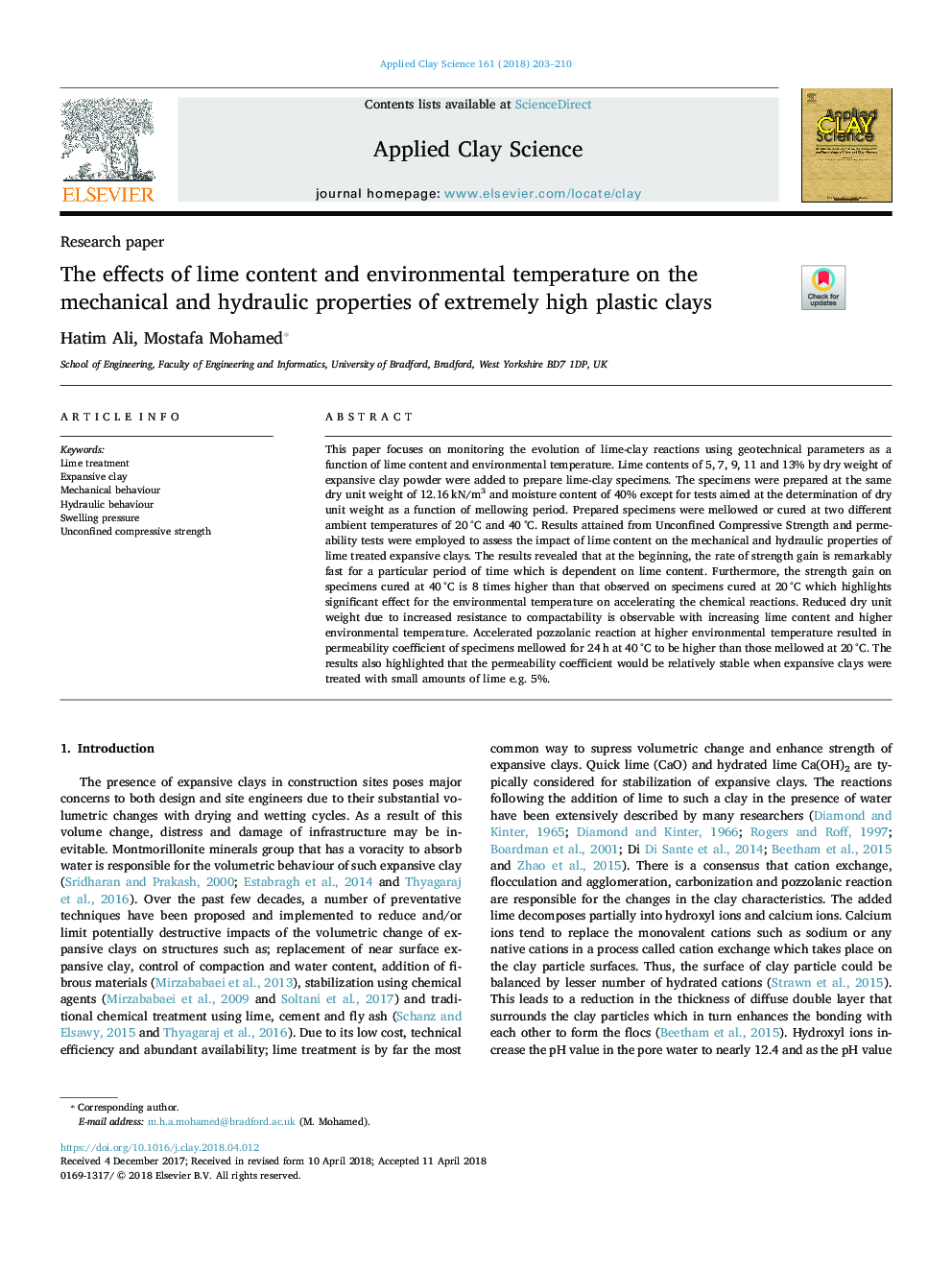| Article ID | Journal | Published Year | Pages | File Type |
|---|---|---|---|---|
| 8045758 | Applied Clay Science | 2018 | 8 Pages |
Abstract
This paper focuses on monitoring the evolution of lime-clay reactions using geotechnical parameters as a function of lime content and environmental temperature. Lime contents of 5, 7, 9, 11 and 13% by dry weight of expansive clay powder were added to prepare lime-clay specimens. The specimens were prepared at the same dry unit weight of 12.16â¯kN/m3 and moisture content of 40% except for tests aimed at the determination of dry unit weight as a function of mellowing period. Prepared specimens were mellowed or cured at two different ambient temperatures of 20â¯Â°C and 40â¯Â°C. Results attained from Unconfined Compressive Strength and permeability tests were employed to assess the impact of lime content on the mechanical and hydraulic properties of lime treated expansive clays. The results revealed that at the beginning, the rate of strength gain is remarkably fast for a particular period of time which is dependent on lime content. Furthermore, the strength gain on specimens cured at 40â¯Â°C is 8 times higher than that observed on specimens cured at 20â¯Â°C which highlights significant effect for the environmental temperature on accelerating the chemical reactions. Reduced dry unit weight due to increased resistance to compactability is observable with increasing lime content and higher environmental temperature. Accelerated pozzolanic reaction at higher environmental temperature resulted in permeability coefficient of specimens mellowed for 24â¯h at 40â¯Â°C to be higher than those mellowed at 20â¯Â°C. The results also highlighted that the permeability coefficient would be relatively stable when expansive clays were treated with small amounts of lime e.g. 5%.
Keywords
Related Topics
Physical Sciences and Engineering
Earth and Planetary Sciences
Geochemistry and Petrology
Authors
Hatim Ali, Mostafa Mohamed,
